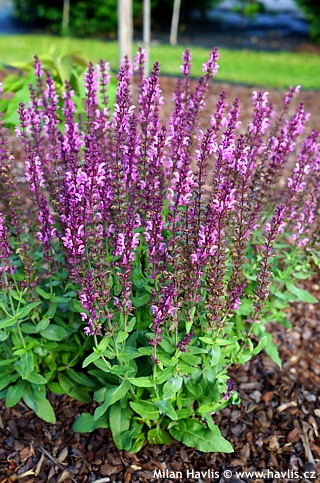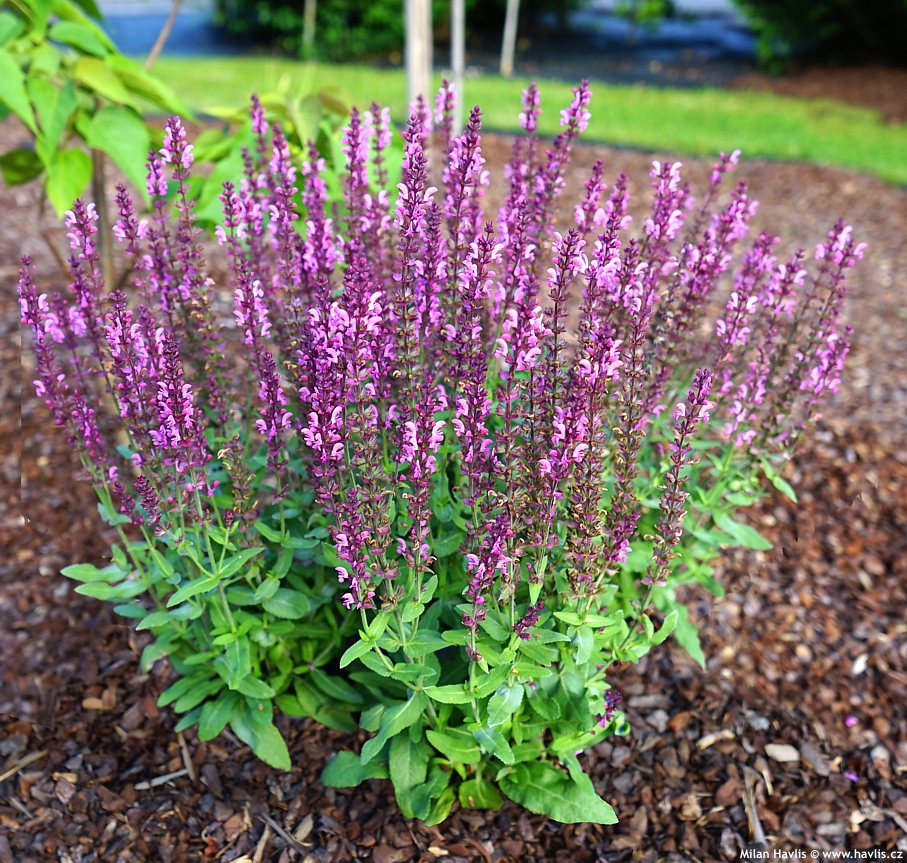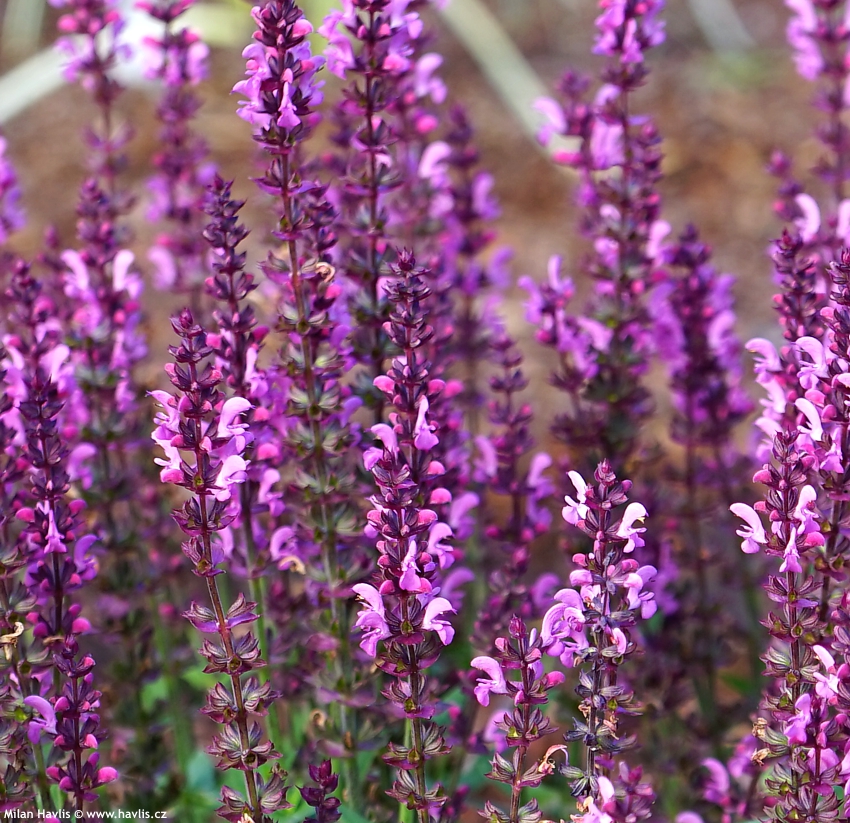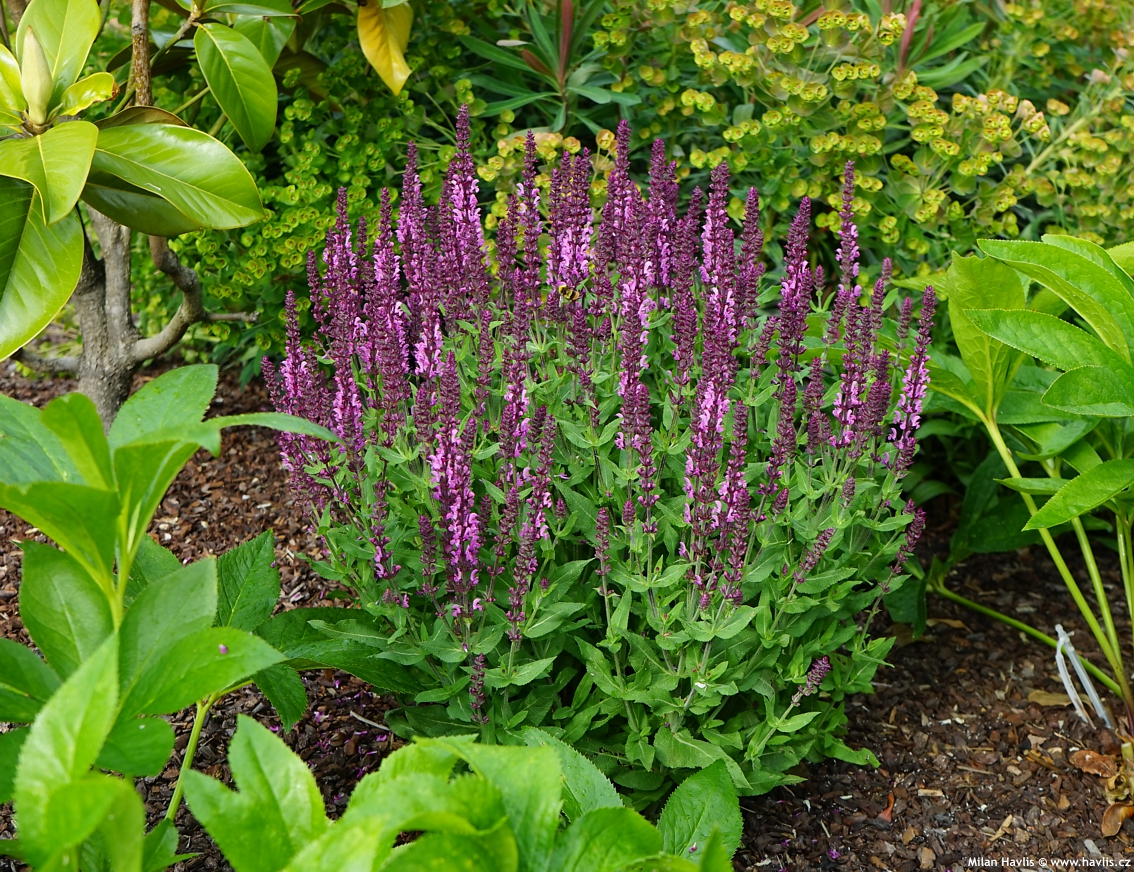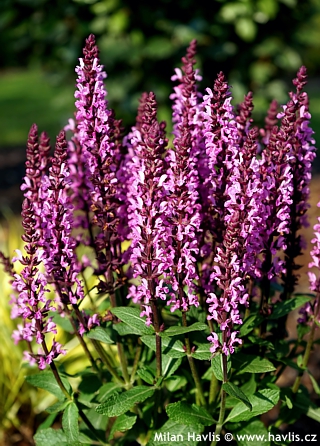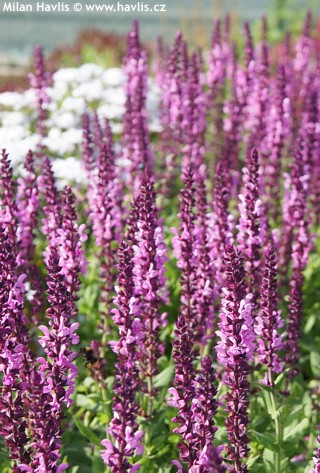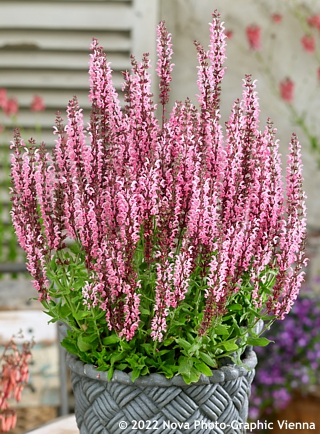Salvia nemorosa 'APEX™ PINK' woodland sage
Salvia
Salvia is a large genus, containing about 900 species. In our climate mostly common (evergreen) sage is grown for culinary uses. Also, very popular are those of subtropical origin that are used here as annuals with long flowering season, especially in public areas. We concentrate on herbaceous perennials which are not widely cultivated, and we believe that there are species, hybrids, and varieties worth the job.
APEX™ is a woodland sage series brought by Israeli breeding company Danziger. All three available colour modifications available so far (blue, pink, and white) boast compact and very dense, almost uniform growth and profuse flowering in their first year. Apex™ Pink sage produces numerous upright stems bearing pale pink flowers with pastel purple calyxes that enhance the colour depth. The plants are only about 30 cm tall, upright, and very bushy.
Flowering usually begins in late May and continues for 4-6 weeks. If you cut the whole plant back to the ground after the first flowering phase, and feed it a little, it will re-grow into a nice and bushy clump with plenty of flowering stems offering the same show in late summer. Leaves are 4-5 cm long, mid green, narrowly ovate, wrinkled, and softly hairy.
Sage will grow in almost any well-drained soil. For best results grow it in light, humus-rich, well-drained soil in full sun or light shade. It needs no fertilizing, only in very poor or compacted soils it will benefit from occasional feeding with a balanced fertilizer. In early spring remove all above-ground parts except for rosette of new or over-wintered, healthy leaves lying flat on the ground. It is perfectly hardy to about -34 °C (USDA zone 4) and will grow in outdoor pots and throws, too.
Last update 06-08-2021

































